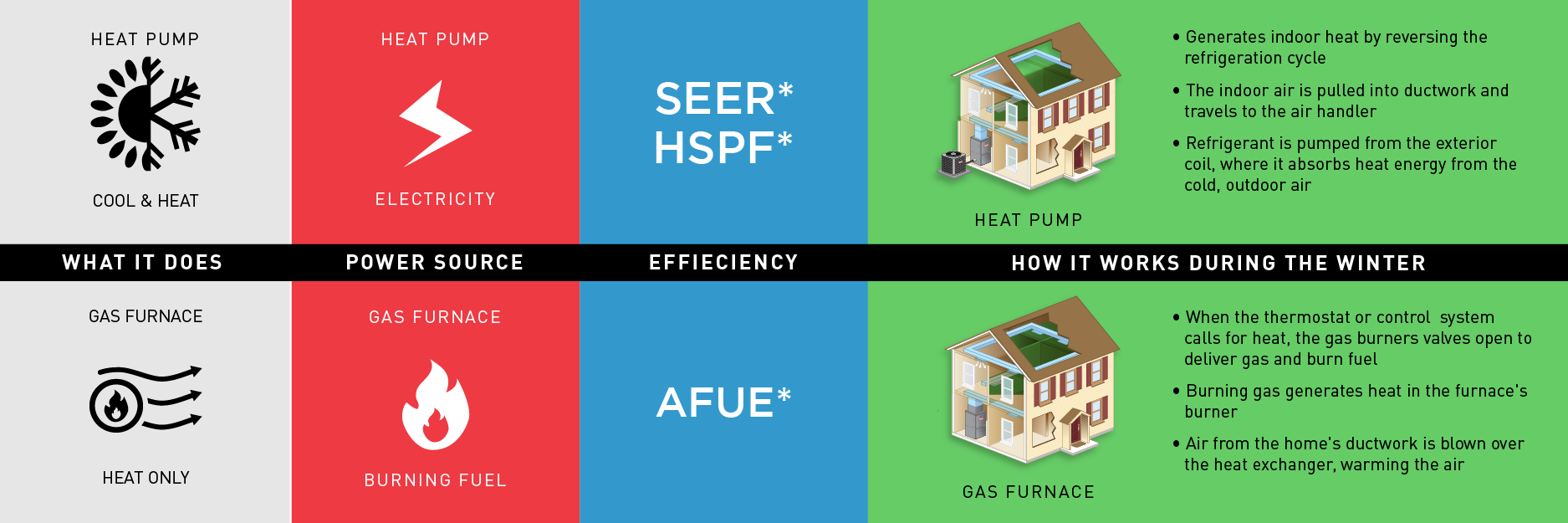Heat Pump and Gas Furnace: What's the Difference?

If you live where temperatures fall below 70°F, you most likely need some form of home heating system to stay comfortable in your home. Air-source heat pumps and gas furnaces are the common types of central residential heating systems. When installed and functioning properly, they can keep the indoors warm with the outdoor temperature start to fall. But do you use a heat pump or a gas furnace, and what’s the difference?

Efficiency and Performance Ratings
*SEER: The Seasonal Energy Efficiency Ratio measures a heat pump’s annual energy consumption and cooling efficiency in typical day-to-day use. Currently, the minimum SEER rating for central air conditioners and heat pumps is 14 in the South and Southwest regions of the U.S. and 13 in the North.
*HSPF: The Heating Season Performance Factor measures the efficiency of air source heat pumps. The higher the HSPF, the more efficient the heating performance of the heat pumps. New units in the United States have HSPF ratings from 7.0 to 9.4.
*AFUE: Measures the Annual Fuel Utilization Efficiency for gas furnaces. This measurement describes how well fuel is consumed to produce heat by a gas furnace. As the AFUE rate increases, the efficiency of your gas furnace also increases. New furnaces manufactured in the United States are required to have at least an 80% AFUE.
